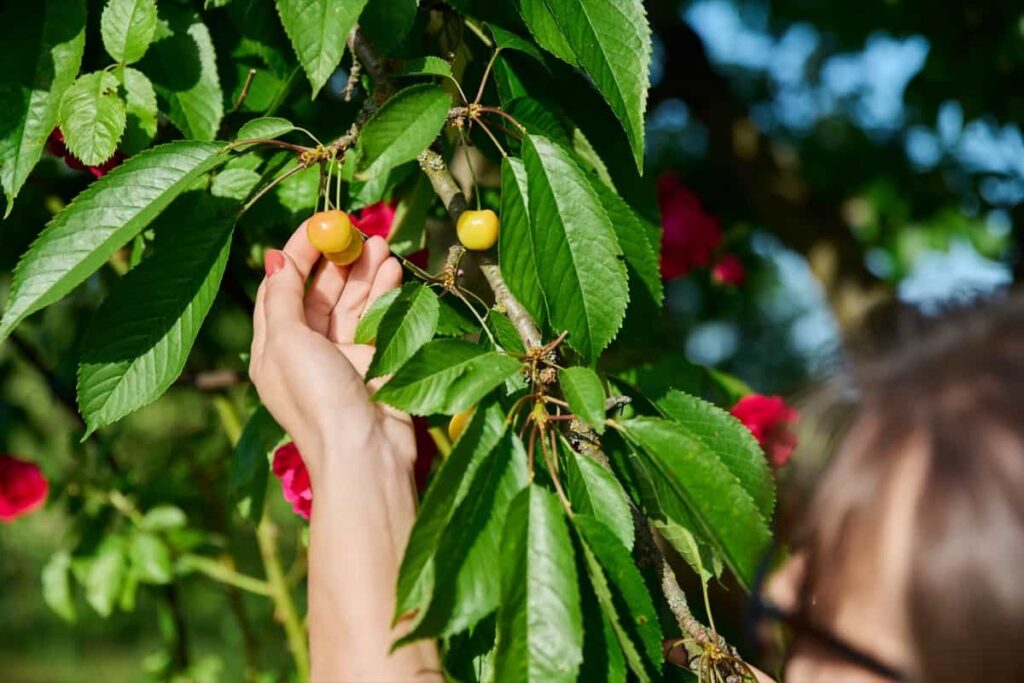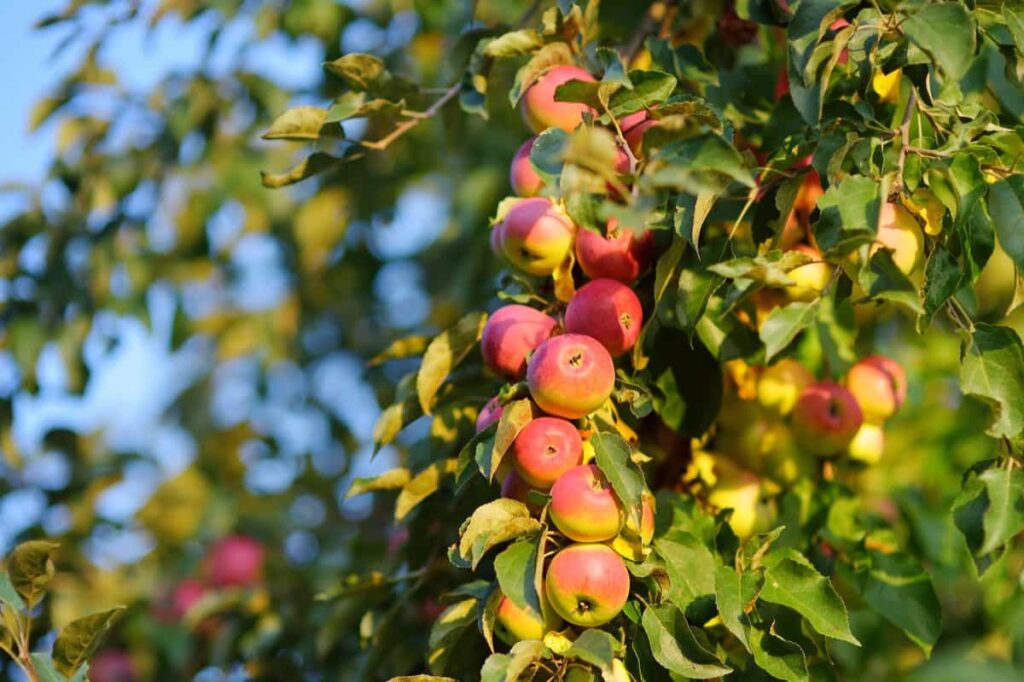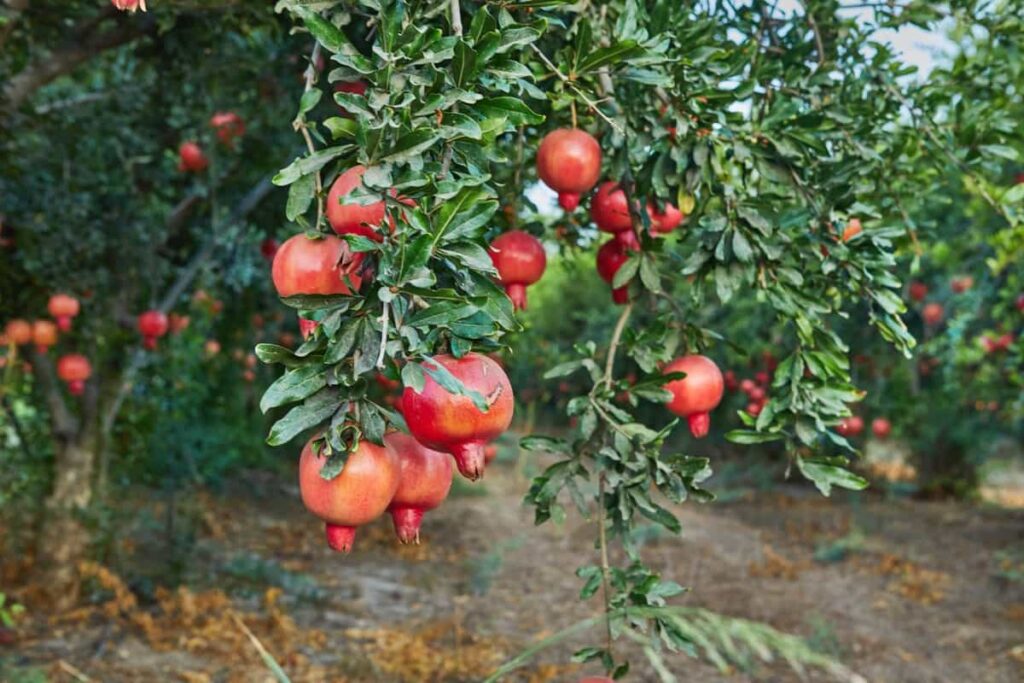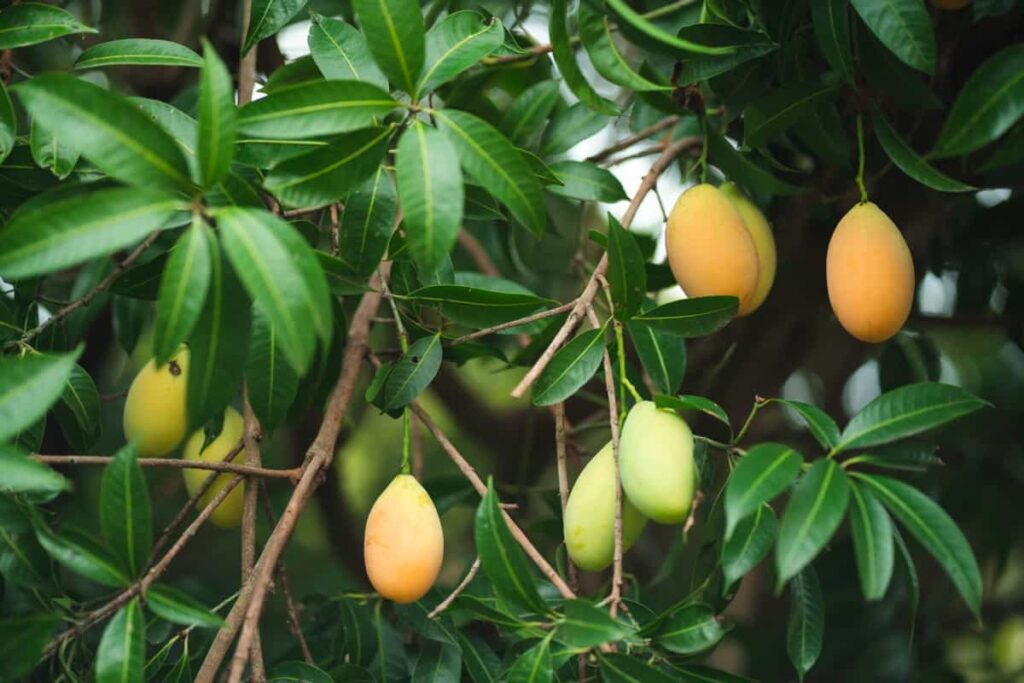Understanding why your fruit tree is not producing fruit is crucial in addressing the issue effectively. There are various reasons why an entire orchard may be facing fruitlessness. From improper pruning techniques to inadequate pollination and pest infestations, these factors can collectively contribute to poor fruit production across the orchard.

10 Reasons Why Your Tree is Not Producing Fruit
Improper Pruning
Over-Pruning
Improper pruning of your fruit tree can hinder its ability to produce fruit. Over-pruning, where excessive branches are removed, can lead to reduced fruiting as the tree may struggle to photosynthesize effectively. Remember that each type of fruit tree may require different pruning techniques based on their growth habits and fruiting patterns.
Under-Pruning
Under-pruning, failing to remove dead or diseased branches, can also impact fruit production by limiting airflow and sunlight exposure. It’s essential to find a balance in your pruning routine. Choose selective pruning that focuses on removing damaged or crowded branches while promoting healthy growth. Proper timing is crucial too; prune during the dormant when the tree is less stressed.
Lack of Pollinators
Inadequate Pollinator Attraction
Inadequate pollinator attraction can lead to a lack of fruit production. Imagine your fruit tree standing tall, its branches full of blossoms waiting to be pollinated. Pollinators play a major role in the reproductive process of fruit trees, transferring pollen from one flower to another. Without them, your tree may struggle to bear fruit.
Inadequate pollinator attraction can be caused by various factors, such as the absence of flowers that attract pollinators or the overuse of pesticides that harm these beneficial insects. To encourage more pollinators, consider planting flowering plants that bloom at different times throughout the year. This will provide food sources for pollinators when your fruit tree is in bloom.
Pollinator Habitat Destruction
Pollinator habitat destruction is another key factor. As we see urbanization and agricultural expansion encroach on natural habitats, the homes and food sources for these vital creatures diminish. To combat this issue, consider planting flowers that attract pollinators near your fruit trees. Creating a diverse garden ecosystem will help draw in these essential insects and birds. Additionally, avoiding pesticide use whenever possible can protect the health of pollinators and encourage them to visit your orchard more frequently.
In case you missed it: 10 Best Passion Fruit Fertilizers: When and How to Apply Organic and Natural Fertilizers

Pest and Disease Issues
Common Pests
Pests and diseases can affect your fruit tree’s ability to produce a bountiful harvest. Common pests like aphids, caterpillars, and mites can suck the life out of your tree. Regularly inspect the leaves, branches, and fruits for any unusual markings or discoloration that could indicate a problem.
Disease Infestations
Disease infestations such as powdery mildew or fire blight can spread rapidly if left unchecked. Implementing integrated pest management strategies can help control pest populations naturally without resorting to harmful chemicals that may harm beneficial insects or contaminate your fruit. Similarly, practicing good sanitation by removing fallen leaves and fruits promptly can prevent the spread of diseases throughout your orchard.
Unsuitable Climatic Conditions
Frost Damage
Frost damage and heat stress can significantly impact the growth and productivity of your fruit tree. Frost damage occurs when sudden temperature drops harm the delicate buds, flowers, or young fruits on your tree. It can lead to reduced yields or even complete crop loss if severe enough.
Heat Stress
Heat stress can cause excessive water loss through transpiration and hinder proper fruit development. Protecting your fruit tree from frost damage may involve covering it with protective materials during cold spells or planting varieties that are more tolerant to low temperatures. To combat heat stress, providing adequate shade, mulching to retain soil moisture, and regular watering are essential measures to help your tree thrive in hot weather conditions.
Soil Fertility Problems
Nutrient Deficiencies
Nutrient deficiencies are a major issue that can lead to poor fruit development. It’s essential to regularly test your soil to ensure it has the right balance of nutrients for optimal tree health.
Poor Soil Structure
Poor soil structure, such as compacted or waterlogged soil, can restrict root growth and nutrient uptake by the tree. This can result in reduced fruit yield and quality. Implementing proper soil management practices like composting and mulching can help improve soil structure over time. To address nutrient deficiencies, consider fertilizing your trees with organic or synthetic fertilizers tailored to their specific needs. Additionally, incorporating cover crops into your orchard rotation plan can help replenish nutrients naturally and enhance overall soil health.
Water Stress
Overwatering
Water stress can be a major factor in why fruit trees are not producing fruit. Overwatering can affect root rot and deprive the tree of oxygen, while underwatering can cause dehydration and nutrient deficiencies. Finding the right balance is key. To avoid overwatering, make sure your fruit tree is planted in soil and adjust watering frequency based on weather conditions. Monitor soil moisture levels regularly to prevent waterlogging.
Underwatering
Underwatering can stunt growth and reduce fruit production. Ensure your tree receives an adequate amount of water based on its size and age. Mulching around the tree base can help retain moisture during dry periods. By addressing water stress issues promptly, you can help your fruit tree thrive and bear delicious fruits in abundance.
In case you missed it: The Role of Growth Regulators in Fruit Farming: 10 Best Types of Growth Regulators for Fruit Orchard

Improper Tree Spacing
Crowding
Crowding your trees can lead to competition for nutrients and sunlight, hindering their ability to produce fruits. Proper spacing is key to ensuring optimal growth and fruit production. This allows for better air circulation, reducing disease and pest infestations.
Isolation
Isolating them too much can result in poor pollination due to a lack of cross-pollination opportunities. If you notice your fruit tree struggling with spacing issues, consider transplanting or pruning them accordingly. By giving each tree adequate room to grow, you’ll set the stage for a bountiful harvest in the future.
Incorrect Planting Techniques
Planting Depth
Planting depth plays a crucial role in the development of a healthy fruit tree. If the tree roots are planted too shallow or too deep, it can hinder proper growth and nutrient absorption.
Rootstock Incompatibility
Rootstock incompatibility is another common issue that many gardeners overlook. Choosing the right rootstock for your specific fruit tree variety is essential to ensure compatibility and successful growth. When planting a new fruit tree, always research the ideal planting depth and select compatible rootstocks to avoid any potential problems down the line.
Age of the Tree
Juvenile Phase
During the juvenile phase, the tree focuses on establishing its root system and branching out to support future fruit production. This stage requires patience as it may take a few years for the tree to reach maturity and start bearing fruits.
Senescence
Senescence, on the other hand, is when the tree reaches old age and starts showing signs of a decline in productivity. It’s a natural process where the tree’s energy shifts from producing fruits to sustaining itself. Proper care can help prolong the productive lifespan of your tree, ensuring that you enjoy a bountiful harvest for many years to come.
Lack of Proper Care and Maintenance
Mulching and Weed Control
Mulching helps retain moisture, suppresses weeds, and provides nutrients as it breaks down over time. Select organic mulch like straw or wood chips to improve soil health. Weed control is crucial as weeds compete with your fruit tree for water, nutrients, and sunlight. Regularly remove weeds by hand or use a natural weed killer to prevent them from choking the roots of your tree.
Regular Health Monitoring
Regular health monitoring involves checking for signs of pests, diseases, or nutrient deficiencies. Inspect leaves for discoloration or abnormal spots, check branches for any unusual growth, and monitor fruit development closely. By implementing proper care practices such as mulching, weed control, and regular health monitoring, you can support the overall health of your fruit tree.
In case you missed it: How to Increase Apricot Fruit Size: Exploring Apricot Fruit Growth Optimization

Conclusion
Various factors can cause fruit drop, and understanding the causes of fruit drop can help you take appropriate measures to promote healthy fruit development in your trees. Improper pruning practices may hinder fruit production. Pay attention to how you trim your tree to ensure optimal fruiting. Ensuring that you provide proper care and maintenance for your fruit tree will help encourage fruitful outcomes in the future.
- Profitable Village Farming Business Ideas in 2024
- High-Yield Aquaculture: Fast-Growing Fish for Farming
- Effective Fish Pond Construction Techniques for Beginners
- Irrigation and Water Management in Pineapple Farming
- Blossom to Harvest: Mastering Flowering and Pollination in Papaya Farming
- Pig Fattening Essentials: From Selection to Sale for Beginners
- Raising Wagyu Cattle: A Complete Guide for Premium Beef Production
- Soil Types and Their Water Holding Capacity
- Optimizing Irrigation Schedules for Coconut Groves for Enhanced Yield
